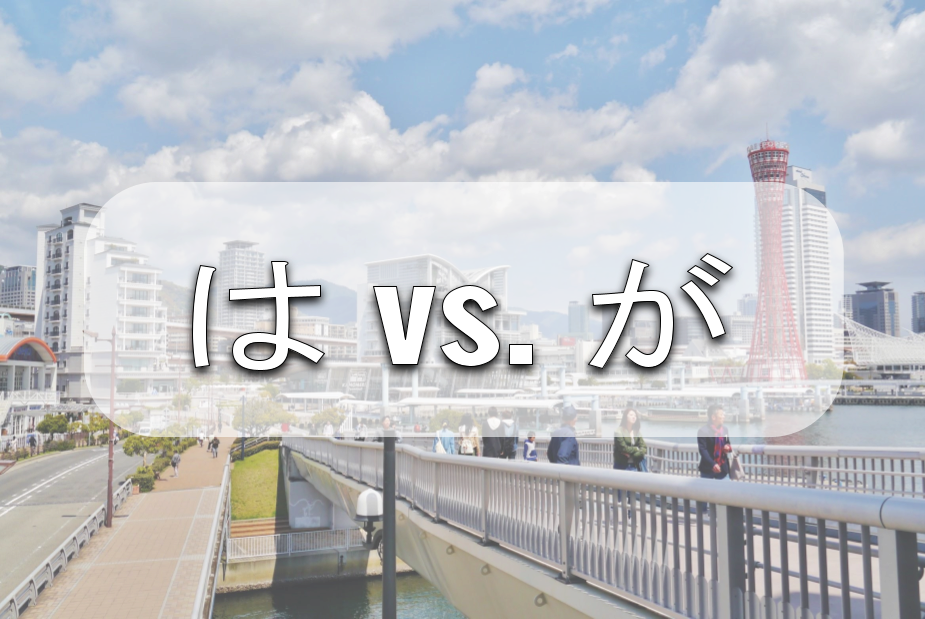Let's face it: Japanese has a lot of rough patches for English native speakers itching to learn it, and some of these crop up from the very start of one's studies.
One of the most challenging aspects of these patches for a beginner is the topic of Japanese particles. While there are a few great resources out there for deep-diving into these uniquely Japanese words (among which I most recommend this one), it can still be particularly difficult to understand the difference between two innocent-looking particles: は (wa) and が (ga).
While these particles are often used interchangeably in English translations, they have distinct meanings and functions in Japanese grammar.
In this article, we'll take a brief look at は and が and provide examples to aid you in gaining a little more ground in comprehending them.
Subjects and Topics
は and が are both particles that can indicate the subject of a sentence, but they are used in different ways.
は is used to mark the topic of a sentence (a concept foreign to English speakers), while が is considered the one most frequently used to mark the subject. (Keep in mind, however, that は is frequently doing the job of marking the subject as well, though not in the same sentence with が.)
The distinction here is a bit tricky at first: the topic is what a sentence or a conversation is about, while the subject of a sentence is the person or thing that is doing the action.
Let's take a look at some examples to see how this works in practice:
私は日本語が話せます。
"As for me, I can speak Japanese."
In this sentence above, は marks the topic (私は), while が marks the subject (日本語が), that being what I can speak.
Kare ga sensei desu.
"He is a teacher."
This sentence shows が marking the subject (彼が), which is the person doing the action of being a teacher.
As you can see, the use of は and が can change the focus of what is being said. So one general difference between these two particles is that while は is used to bring up a topic, が is used to identify the subject of the sentence.
Contrasting and Emphasis
は has the additional benefit of expressing a contrast between one thing to another.
Watashi wa ringo ga suki desu ga, ani wa orenji ga suki desu.
"I like apples, but my older brother likes oranges."
In the sentence above, は is used to contrast between two items (myself and my brother) and highlight the difference in preferences.
Kinou wa tomodachi to eiga ni ikimasen deshita.
"Yesterday, I didn't go to the movies with my friends."
This sentence shows は being used to highlight the negative aspect of the statement ("didn't go") and contrast it with a hypothetical positive statement ("went to the movies with friends").
However, there's another type of situation that highlights the differences between は and が. Despite the fact that they can often be used interchangeably, in general は is used to make a statement about a topic, while が is used to provide new information about a subject.
Here's an example:
Sakana wa suki desu.
"I like fish."
The は in this sentence marks the topic (魚は) and provides a general statement about the speaker's likes and dislikes.
Sakana ga suki desu.
"I like fish."
Now が is marking the subject (魚が) and provides new information about what the speaker likes.
Summary
In short, は is used to mark the topic of a sentence or to contrast between options, while が is used to mark the subject or emphasize. And in some cases, they can be used interchangeably depending on the context and the focus of the sentence.
There's no doubt that it can take a while to get the hang of using は and が correctly. But while the distinction between them is indeed an essential aspect of Japanese grammar, the difference is probably best grasped over time by lots of example sentences.
And while understanding their differences and practicing their use can improve your Japanese language skills and help you to communicate more effectively, it is through courses like those offered here on IJC that one realizes there's no point in stressing out over getting it all right off the bat. By spending large amounts of time listening, reading, and practicing, you too will begin to intuit the nuances between these particles.
Check out our Courses page for a look at what we offer here!


